#Ranunculus Abortivus
Explore tagged Tumblr posts
Text
Ranunculus abortivus - littleleaf buttercup
Native
Buttercup Family (Ranunculaceae)



Bloom: Started noticing in late march into April.
Notes: it's pretty dense in the area it's growing in, and the basal leaves remind me a lot of violet (which I also have growing everywhere)
LINKS:
https://www.illinoiswildflowers.info/weeds/plants/sf_buttercup.htm
https://en.wikipedia.org/wiki/Ranunculus_abortivus
https://www.inaturalist.org/taxa/126371/browse_photos
#Ranunculus Abortivus#Small-Yellow Buttercup#Crowsfoot#Native#In Yard#April#Ranunculaceae#Buttercup family#Z6#Z3#Z7#Z10#yellow#illinois native plant#volunteer
0 notes
Text
My Garden Flowers Part 3
All photos mine. The small buttercup and evening primrose are edited for colour since the camera didn't catch it and washed it out.
In order of appearance:
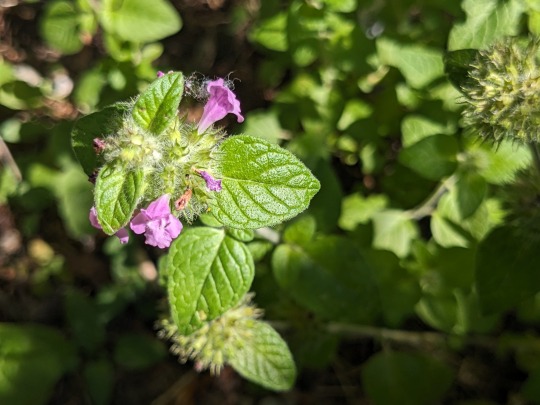
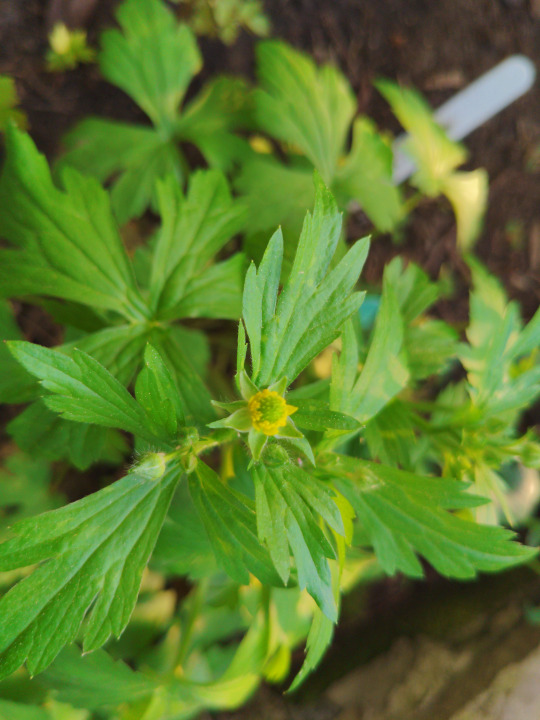


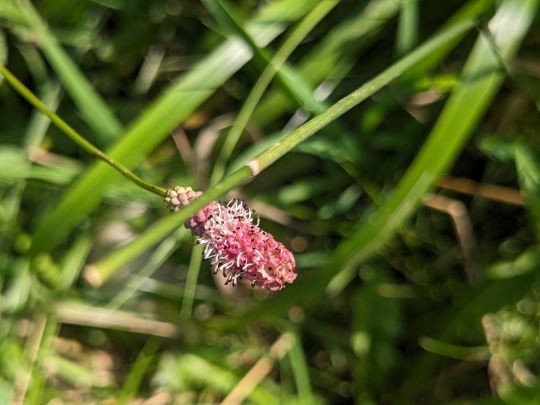



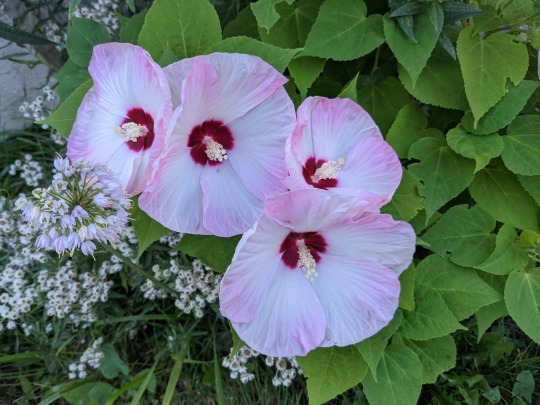
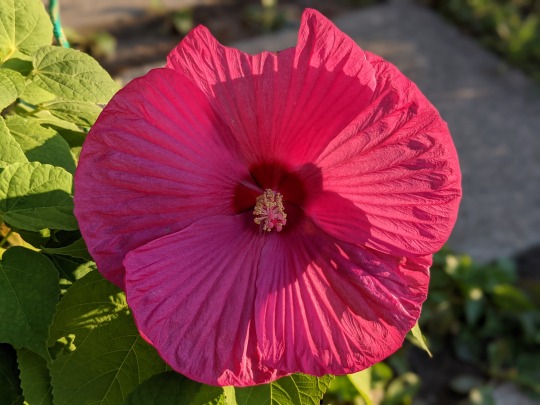
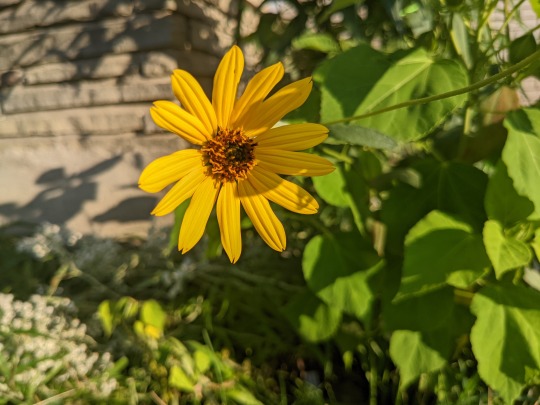

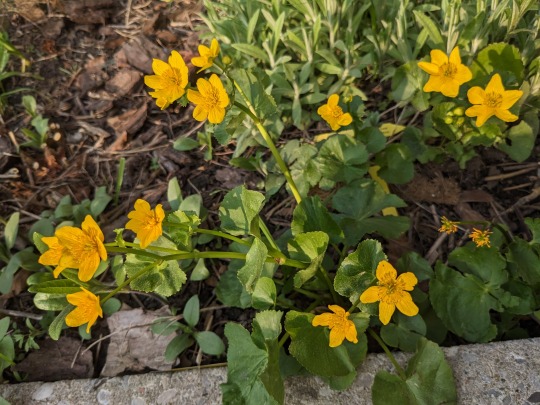

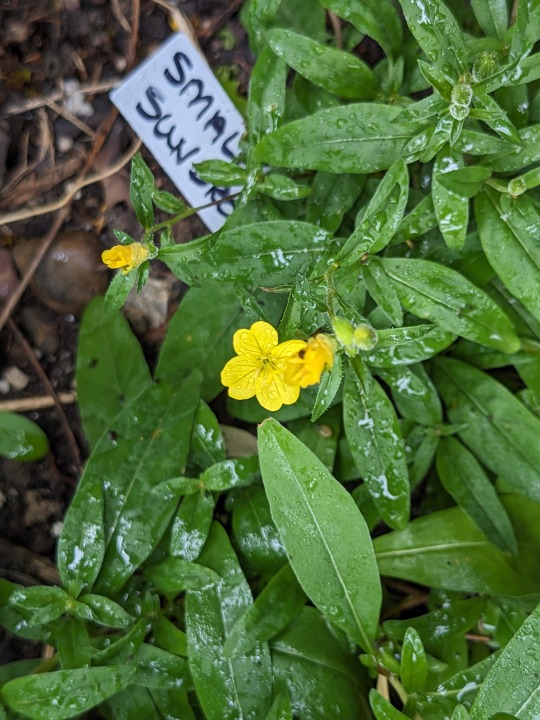

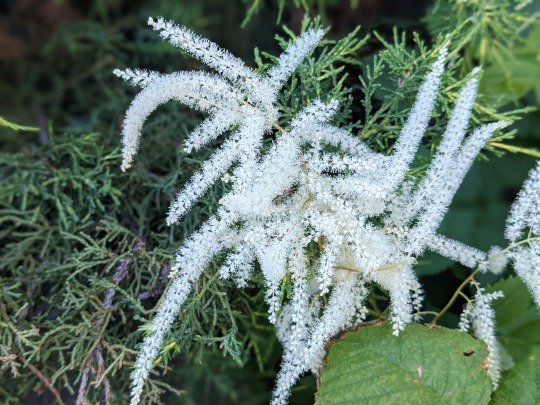
In order of appearance:
061. Wild Basil (Clinopodium vulgare) Didn't do so well the last place I had her in, but she seems happy in this spot, so fingers crossed.
062. Crested Iris (Iris cristata) Not pictured as she hasn't flowered yet.
063. Smallflower Buttercup (Rancunculus abortivus) Not much to look at compared with other buttercups but one of the only native buttercups with (limited) edible uses.
064. Smooth Solomon's Seal (Polygonatum biflorum) Not pictured as she hasn't flowered yet. Soon, hopefully!
065. False Solomon's Seal (Maianthemum racemosa) Not pictured as she hasn't flowered yet, but she's growing well so hopefully next year.
066. Blisterwort (Ranunculus recurvatus) I didn't plant that. She just turned up last year. Not pictured as I haven't got any pictures yet.
067. Fairy Spuds (Claytonia virginica) Not pictured as she hasn't flowered yet. She's a wee little spud in the ground.
068. Flowering Dogwood (Cornus floridus) Not pictured as she hasn't flowered yet but she is slowly spreading out.
069. Plantain-Leaf Sedge (Carex plantaginea) Not pictured as I haven't got pictures yet. I should. It's a neat plant. Evergreen, too!
070. Virginia Bluebells (Mertensia virginica) One of the prettiest plants I've ever seen, from the shape and texture of the leaves to the purplish pink buds to the bright blue bell-shaped flowers. They're spring ephemerals, though, so they're long gone by now. But will emerge next spring!
071. Evening Primrose (Oenothera biennis) Only lives for two years and reseeds itself. It's a common weed along sidewalks, but its flowers glow yellow in the evening and often remain in bloom at night.
072. Squirrel Corn (Dicentra canadensis) Not pictured as she hasn't flowered yet. The leaves are really cute, though.
073. Large Toothwort (Cardamine maxima) Not pictured as she hasn't flowered yet.
074. Wintergreen (Gaultheria procumbens) Not pictured as I haven't got any pictures yet.
075. Great Burnet (Sanguisorba officinalis) A cultivar, not sure which one. I'll get the wild type if/when I can.
076. American Plum (Prunus americana) I was not expecting her to flower this year! Hopefully she will next year too, and without aphids this time so I can have some plums. :)
077. Smooth Aster (Symphyotrichum laeve) So like I said, I do think New England asters are the prettiest of this genus, but smooth asters are very nice in their own way. Tender bluish leaves, and delicate light purple flowers.
078. Sweet Grass (Hierochloe odorata) Not pictured as I haven't got any pictures yet. She only flowered one year. Hasn't since. I won't miss a photo next time.
079. Nodding Onion (Allium cernuum) What's better than pretty flowers? Tasty pretty flowers!
080-081. Swamp Rose Mallow (Hibiscus moscheutos) Two different cultivars and the red one has died, but I did get my hands on the wild type! That will hopefully bloom this year.
082. Stiff Sunflower (Helianthus pauciflorus subrhomboideus) Holds her own against the much more aggressive Nuttall's sunflower. Sometimes called beautiful sunflower. I don't know how one decides which species of a very showy genus gets that name, but I guess she won out.
083. Pearly Everlasting (Anaphalis margaritacea) Another one that was hard to choose a photo of. You just hardly believe they're real!
084. Marsh Marigold (Caltha palustris) I planted her where there's a drip from the eavestrough so she can get very wet when it rains. :) She is not a marigold but instead part of the buttercup family.
085. Nuttall's Sunflower (Helianthus nuttallii) Whenever I am expressing frustration about sunflowers, it is almost always this species. lol Very beautiful but very aggressive.
086. Larkspur Violet (Viola pedatifida) Not pictured as she hasn't flowered yet.
087. White Turtlehead (Chelone glabra) Not pictured as she hasn't flowered yet.
088. Small Sundrops (Oenothera perennis) Not quite as intensely yellow as some of her relatives but still very bright.
089. Bigleaf Aster (Eurybia macrophylla) You generally grow her for foliage rather than her flowers, but flowering she is! Very drought-tolerant, but spreads more readily in less harsh conditions.
090. Bride's Feathers (Aruncus dioicus) Southern Ontario and surrounding area's evolution really went off on the lacy white flowers, and this species' flowers might be the laciest of them all.
#blackswallowtailbutterfly#my photos#photography#my garden#garden flowers#native plant gardening#native flowers of Carolinian Canada and USA#Viola sororia#Rancunculus abortivus#Mertensia virginica#Oenothera biennis#Sanguisorba officinalis#Prunus americana#Symphyotrichum laeve#Allium cernuum#Hibiscus moscheutos#Helianthus pauciflorus subrhomboideus#Anaphalis margaritacea#Caltha palustris#Helianthus nuttallii#Oenothera perennis#Aruncus dioicus
11 notes
·
View notes
Text


little-leaf buttercups
#plants#nature#flowers#spring#buttercups#ranunculus#plantblr#yellow flowers#ranunculus abortivus#kidneyleaf buttercup#macro photography#my photos#los-plantalones
45 notes
·
View notes
Photo

Ranunculus abortivus
Please check out our website here: http://lakesideendeavors.com/growwild/
#Ranunculus abortivus#wildflower#wild flower#wildflowers#wild flowers#flower#flowers#plant#plants#garden#gardening#gardens#nature#nature photography#photography#growild#growwild
27 notes
·
View notes
Text

4/6/20
This plant is interesting, as the basal leaves and the stem leaves are really different. I used to find them in huge patches but now I often see them spaced out in sporadic groups.
0 notes
Photo



Ranunculus abortivus - Littleleaf Buttercup
#an interesting common name#since the leaves are decent sized#though the flowers are quite small#wildflowers#plant id#native plants#ranunculus#ranunculus abortivus#buttercup#buttercups#littleleaf buttercup#spring#leaf morphology
0 notes
Photo


A sea of False Rue Anemone, Enemion biternatum, with special guests mixed in. One such guest that doesn’t get enough forest floor spot light or credit as a tough pavement crack plant, Ranunculus abortivus, the aborted early buttercup.
#forests#forest floor#Temperate#Forest#plants#plantblr#native plants#botany#enemion biternatum#ranunculus arbortivus#nature#wildlfowers#ohio
50 notes
·
View notes
Text
Yellow buttercup flower

#Yellow buttercup flower how to
Then there is the childhood lore- holding the flower under your chin to reveal your love for butter. Of course, this cannot be true, since they are toxic to livestock. One of these stories is that cows that grazed on buttercups produced the sweetest milk. Other, more down to earth stories, can exist though. This has resulted in buttercup flowers named “coyote’s eyes” in various parts of the U.S. Not knowing what to do, the coyote made new eyes with buttercup flowers. Each one that fell sprouted into buttercup flowers.Īnother story is of a coyote who tossed his eyes into the air one morning, and an eagle swooped in and stole them. Not noticing this, the man walked away, sprinkling his coins across the field as he went. When he refused the fairies cut a hole in his sack with a blade of grass. In another legend, a group of fairies asked an old miser to share his gold with them. Orpheus then transformed him into a buttercup flower. While singing, he became so entranced by his own voice that he collapsed and never woke. One day, in his stunning yellow and green robes, he sang to a group of wood nymphs. In this legend, a young boy named Ranunculus had a beautiful, entrancing singing voice. One of the most popular legends comes from Libya. Meaning of Buttercup Flowersīuttercups appear in songs, games, and legends throughout time. Certain varieties can appear in the mountains and rocky slopes from Alaska to New Mexico. These interesting flowers can appear in woods, fields, gardens, lawns, roadsides. These pistils are the flower’s female parts, which will develop into achenes (small dry fruits). These plume out of a slightly green center, which consists of a cluster of pistils. Another interesting fact is they have many stamens rather than the common five. The way these petals curve creates a pool of sweet nectar in the center. Typically, buttercups grow up to 2 feet tall, and their flowers reach only 1 inch wide. This waxy coating comes from reflective cells just below the petal surface. For most varieties, buttercups have slightly curving yellow petals with a waxy coating. Despite the variations, they carry many of the same characteristics. Gorman’s Buttercup (Ranunculus Gormanii)īuttercups belong to the Ranunculus genus, which contains approximately 400 species.Spinyfruit Buttercup (Ranunculus Muricatus).Straightbeak Buttercup (Ranunculus orthorhynchus).Macoun’s Buttercup (Ranunculus Macounii).Lapland Buttercup (Ranunculus Lapponicus).Sagebrush Buttercup (Ranunculus Glaberrimus).Yellow Water Buttercup (Ranunculus Flabellaris).Birdfoot Buttercup (Ranunculus Pedatifidus).Kashubian Buttercup (Ranunculus Cassubicus).Frogbit Buttercup (Ranunculus Hydrocharoides).California Buttercup (Ranunculus Californicus).Goldilocks Buttercup (Ranunculus auricomus).Anemone Buttercup (Ranunculus Anemoneus).Littleleaf Buttercup (Ranunculus abortivus L.).Aconite Leaf Buttercup (Ranunculus aconitifolius).Swamp buttercup (Ranunculus septentrionalis).Persian Buttercup (Ranunculus asiaticus).Early Buttercup (Ranunculus fascicularis).Bulbous Buttercup (Ranunculus bulbosus).
#Yellow buttercup flower how to
We’ll also take a look at the most popular varieties of buttercups and how to grow them. Below we’ll take a look at the interesting mythology and meaning of the buttercup flower. It’s this quality that makes this little golden flower so unique. And, for the purposes of the game, they have a shiny, waxy coating on their petals that reflects light. They are also considered far superior in beauty. Why? What makes them so much better than the dandelion?ĭespite growing just as wild, buttercups aren’t considered weeds. However, most in Europe claim the buttercup is the only valid flower for this little under the chin game. Whether you grow them in your garden or not, you’ll see them everywhere. Why can they be interchangeably used with this childhood garden game? Well, because they are bold wildflowers. Well, across much of the world, this is a practice largely done with buttercup flowers. When you were a child, did you sit in the yard with your friends or siblings and stick dandelions under your chin? If your chin glowed yellow, it meant you liked someone. When you buy through links on our site, we may earn an affiliate commission.

0 notes
Text
Fire, Ticks, and No Significance: Oh My!
Okay so two weeks ago I went on a little adventure, but instead of going to Puerto Rico or China, I found myself out in the forests. This was my first time venturing out to the forests/prairies, specifically one known as the Conard Environmental Research Area (CERA). My classmates went there a few weeks before to watch some birds in the cold, but luckily sadly I wasn’t able to go because I got pretty sick a few days before. When we arrived at CERA I knew that we were going to go out and count some plants, but I definitely underestimated the experiment. When we first arrived, I found myself a bit overwhelmed as the details of the experiment were explained to us.
“Poison Ivy.
Ticks
Outside.”
Those were the words that got my blood pumping, but before I could really respond my classmates and I shuffled into another room to be trained in plant physiology. Then in less than 20 minutes from arriving, my fellow Grinnellians and I become very error prone botanists. As we walked into the forest to collect data, the further in we got, the more I realized I was not living my best life. Forests and me? Yeah, not a good pair. I just never had a need to walk into a place filled with a lot of dirt, insects, and potential danger.
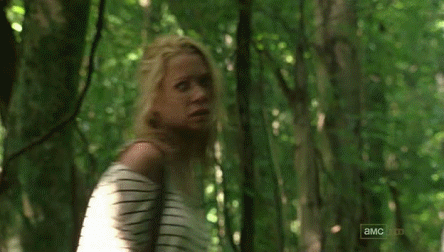
But I’ll save all of that for another post. Anyways, when my group and I arrived at our assigned plot, we took 16 random samples of 1 meter squared areas and observed how many different plant species were there (Biology Department, 2018). Now let me tell you, trying to tell apart two different blades of grass along with a lot of other similar looking plants (looking at you Ranunculus abortivus and Viola adunca) can be so tiring. Once we finished I was so happy to return to a building that I didn’t even mind doing the data analysis. Each group (18 in total) then determined the richness, diversity, and richness per meter squared of their plots using their sample data.
Pause.
This is just a quick update on what each of those variables meant.
Richness:
The number of different plant species in a plot
Evenness: The abundance of those various plant species in a plot not considering species richness
Diversity: The abundance of all the different plant species in a plot that considers the species richness
Now before I continue, I just want to mention one quick thing. At first you may have thought
“Come on Steffie, why were you so dramatic about going outside?”
But after this you’ll understand. So as I was sitting in my seat, waiting to go back to school, I felt something tickle my neck a bit. Instinctively, I reached up and grabbed whatever was there, thinking it was just a piece of lint. But the next thing I know I see a little black thing with legs between my fingers and before I could even think I screamed and tossed the little bugger away. And what were the repercussions of my amazing survival skills? The whole class staring at me.

Yeah, I was not living my best life yet again.
Despite that one traumatic experience, I trudged onward and began focusing on the important things. The data. The purpose of my trek into the wilderness was to see if controlled burns would actually increase the species richness of the entire plot, richness per meter squared, plot diversity, and plot evenness of the burnt plots. We believed such a difference would occur because in oak forests, such a change was observed in the past and although this experiment focused upon the herbaceous and shrub plant community on the ground we thought a similar trend would be seen (Kruger and Reich, 1997).
But guess what...
No difference was found.

And this was after I ran four two sample t-tests comparing the unburnt plots to the burnt plots. Now let me tell you, there’s nothing sadder than seeing a p-value greater than 0.05 when you’re really hoping that there is a significant difference, especially after using Minitab. Although previous research has found that certain herbaceous plants did manage to grow better after a fire treatment, those plants were not observed in our plots (Hutchinson et. al, 2005). After this massive disappointment I took some time to breathe and began to consider potential reasons why we saw such a lack of effect with the fire and I have come up with three reasons:
The seeds of some plant species at CERA are basically immune to fire. I say this primarily because the plants at CERA may have hardier seeds that allowed them to withstand the annual fire treatments than predicted.

How I imagine some of the seeds may have reacted to the fire.
Iowa’s lovely and absolutely annoying strong winds may have carried some seeds from the unburnt plots over to the burnt plots. Thus reintroducing plants into the burnt plots to increase plot richness, diversity, etc.
The plant species there at CERA are naturally strong competitors. This increased competitive ability in the plants may have made it so that when new plants sprouted in both plots, evenness between the two plots became similar because none of the plants were able to outcompete the rest to create a skew of appearance in the proportions.

The Rock -- a human version of these CERA plants.
So now, you may be thinking
“Steffie, would you do this again?”
Quick answer --
No.
But it has nothing to do the lack of significance found, it honestly has everything to do with the idea of venturing out into the wilderness and potentially encountering a tick again.
#NotMyMood
However, I still would 110% support anyone who would continue on with this research. This is because although no significance may have been found in our data, this may not be the truth for all existing herbaceous and shrub plant communities. Instead I believe that we should persevere and continue on with our research. For future similar experiments at CERA, I suggest that a physical barrier be put up between the burnt and unburnt plots. This may be helpful because it would make it harder for wind to carry the seeds from the unburnt plots to the burnt ones. Maybe then we’d see a significant difference between the two plots.
Who knows?
But hey, if you’re interested in this, comment and I’ll help you plan an experiment in your own community!
Let’s burn some plants!

References Listed Below
Biology Department. (2018). Organisms, Evolution, and Ecology Activity Manual. Grinnell College.
Hutchinson, T., Boerner, R., Sutherland, S., Sutherland, E., Ortt, M., & Iverson, L. (2005). Prescribed fire effects on the herbaceous layer of mixed-oak forests. Canadian Journal Of Forest Research, 35(4), 877-890. doi: 10.1139/x04-189
Kruger, E., & Reich, P. (1997). Responses of hardwood regeneration to fire in mesic forest openings. I. Post-fire community dynamics. Canadian Journal Of Forest Research, 27(11), 1822-1831. doi: 10.1139/cjfr-27-11-1822
3 notes
·
View notes
Photo

20190425 MP218.7 Fox Hunters Paradise Overlook - High Piney Spur Overlook - Blue Ridge Parkway
Crowfoot Buttercup Ranunculus abortivus
0 notes
Photo

The first flower in my yard, Little-leaf Buttercup (Ranunculus abortivus)
0 notes